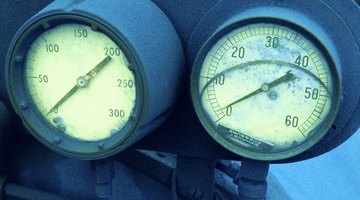How to Winterize a Well Pressure Tank
Properly closing up a summer home or cabin for the season is a job that can save thousands of dollars in repair bills. One of the most important tasks in colder climates is winterizing your well’s pressure tank.

Water in a tank left in a dwelling without heat over the winter can damage the pressure bladder or, in extreme situations, even cause the tank to rupture. Preventing this damage is a simple process that requires no tools and takes only a few moments to complete.
Tip
When restoring water pressure to the tank during cold weather, place a portable heater next to the tank for at least 30 minutes to restore flexibility to the plastic bladder. Plastic becomes brittle when cold and sudden application of water pressure may cause the bladder to split or crack and lose its ability to retain air.
Warning
Do not use antifreeze in any potable water system. Antifreeze is a toxic substance that should only be used in automotive cooling systems.
-
Turn off the electrical power to the well pump. Locate the breakers for the pump in the dwelling’s main service panel and switch them to the off position.
-
Attach a garden hose to the drain valve located at the bottom of the pressure tank.
-
Place the end of the hose outside the dwelling.
-
Open the pressure tank’s drain valve and allow the water to run until the tank is empty.
-
Remove the hose from the drain valve. Leave the drain valve open. This allows any remaining moisture or condensation an escape route from the tank. Place a small bowl or container under the drain if it is located over a surface that may be damaged by dripping water.
The Drip Cap
- Properly closing up a summer home or cabin for the season is a job that can save thousands of dollars in repair bills.
- Remove the hose from the drain valve.
- Place a small bowl or container under the drain if it is located over a surface that may be damaged by dripping water.
References
Writer Bio
Finn McCuhil is a freelance writer based in Northern Michigan. He worked as a reporter and columnist in South Florida before becoming fascinated with computers. After studying programming at University of South Florida, he spent more than 20 years heading up IT departments at three tier-one automotive suppliers. He now builds wooden boats in the north woods.
Photo Credits
- Jupiterimages/Photos.com/Getty Images
- Jupiterimages/Photos.com/Getty Images
More Articles



